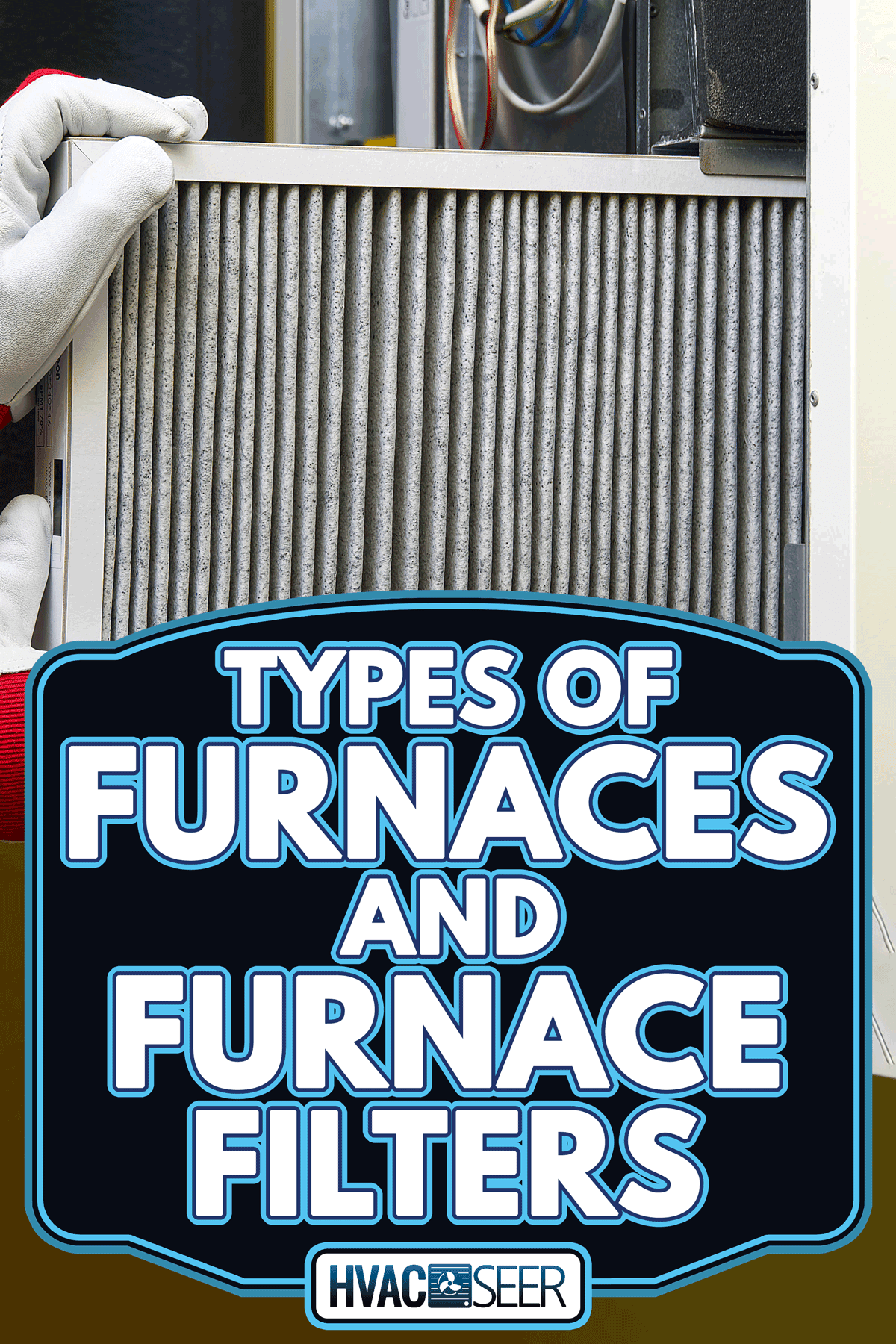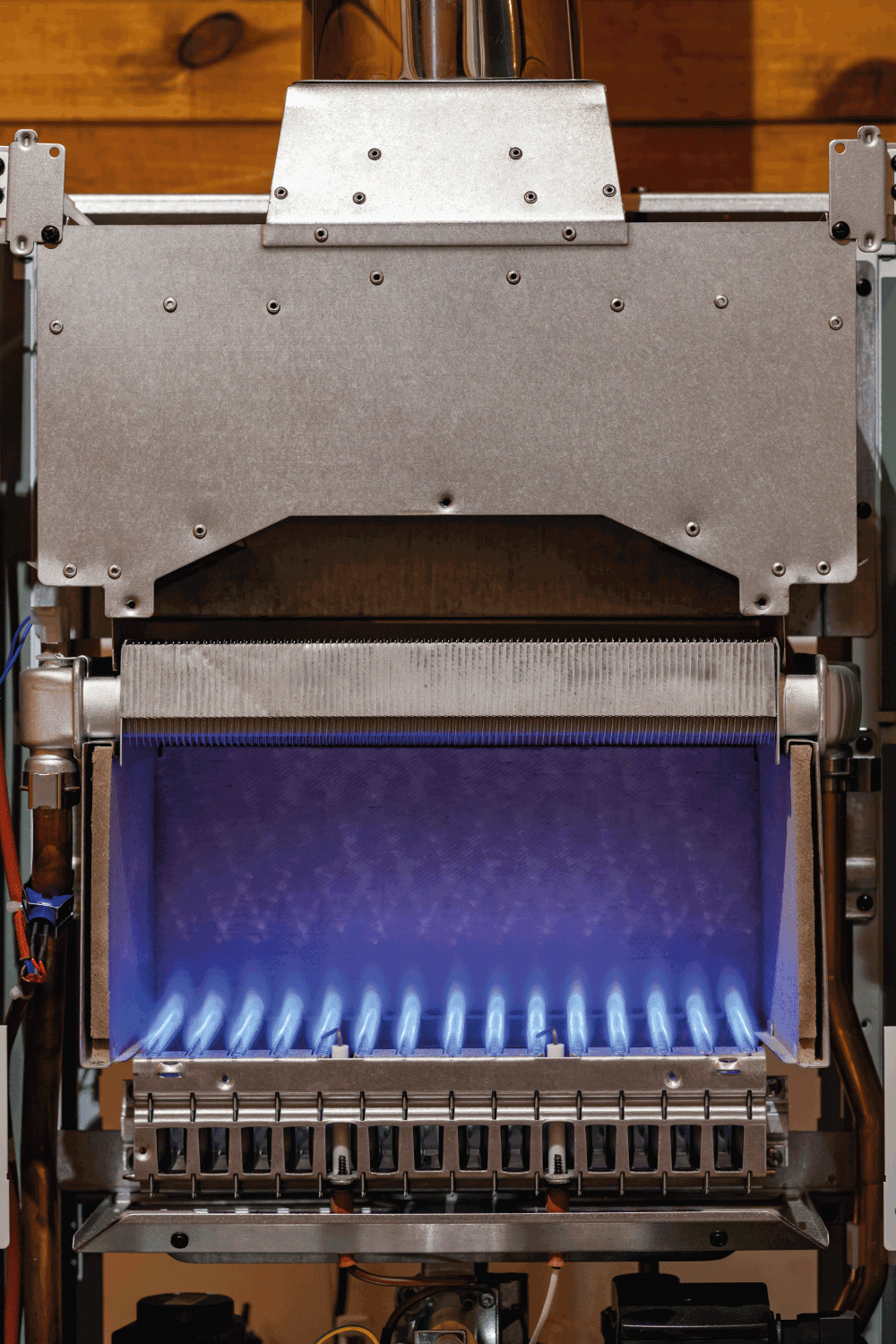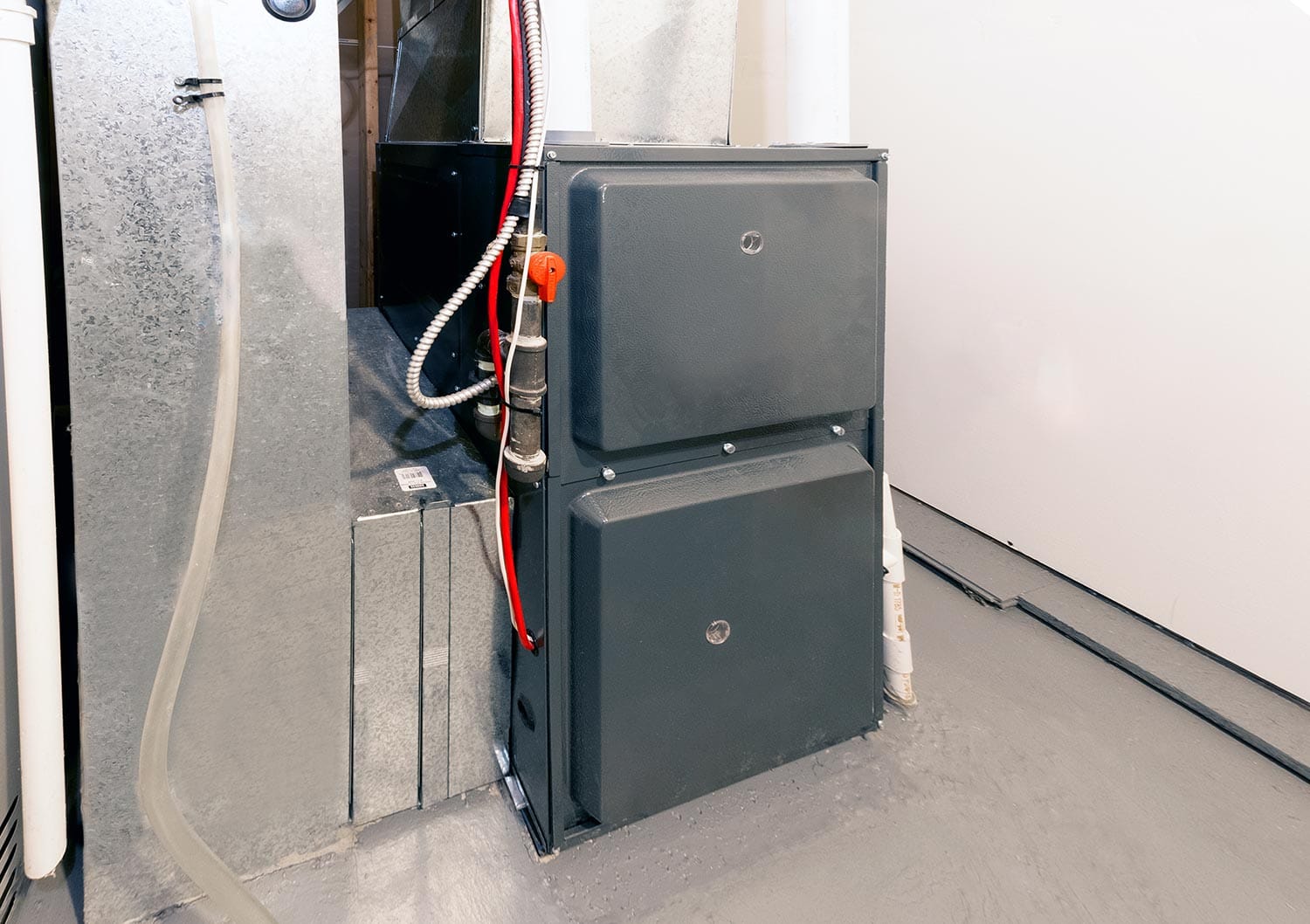When it comes to choosing the right furnace, it's easy to become overwhelmed by all the options. First, do you want to opt for a gas furnace, or would you prefer electric? Is there really much of a difference? Don't get stressed over the many details.
We have compiled a list of the types of furnaces and filters, and we will explain the advantages and disadvantages of owning gas and electric furnaces. Before you go shopping, you will be prepared with the knowledge you need to choose the best heating unit for your home or business. Without further ado, let's get into it!

Electric
Unlike gas furnaces, every electric furnace operates in the same manner. These systems push cool air through heating coils, making the air hot before distributing it throughout your home.
1. 15 KW Electric Furnace 51,180 BTUs
This Goodman Electric furnace puts out 51,180 BTUs and is more energy efficient than most gas heating systems. Not only does it offer a multi-speed blower, but the blower is also in multiple positions for optimal heating. At 30 inches tall and only 79 pounds, it's light and compact.
Click here to see more on Amazon.
2. Miller E7EB/EM Series 15KW Electric Furnace for Mobile Homes
It can be a bit challenging to find a furnace that is approved for mobile homes. This electric furnace is mobile home approved and very compact. At merely 29 inches tall and 74 pounds, it is easy to maneuver and install. Additionally, it features a four-speed motor and 53,000 BTUs for optimal performance.
Click here to see more on Amazon.
3. Goodman 20KW Electric Furnace 68,240 BTUs
This Goodman electric furnace boasts 68,240 BTUs, rust-proof heating elements, and a control circuit for staging, providing you with evenly heated rooms and a thermostat to control temperature. It is also one of the most compact at only 72 pounds and 26 inches tall.
Click here to see more on Amazon.
Types of Gas Furnaces
Gas furnaces use blowers, heat exchangers, and burners to turn gas into heat. The manner in which this process is carried out will depend on the type of gas furnace you own.
Single-Stage Furnace
With a single-stage gas furnace, you do not turn the heat up or down. Instead, high is the only setting. Most single-stage units, at approximately 80% efficiency, are not as efficient as other types of gas furnaces.
1. Single-Stage Upflow/Horizontal Forced Air 44,000 BTU 80% AFUE Gas Furnace
If you need something small, this single-stage furnace should do the trick. At only 33 inches tall, it's compact enough to fit in a cabinet and only weighs 103 pounds. You'll only get 80% efficiency and 44,000 BTUs, but you'll enjoy a multi-speed blower with 5 settings and a self-diagnosing control panel for easy troubleshooting.
2. Goodman 60,000 BTU Horizontal Gas Furnace
This single-stage gas furnace is 80% efficient. It features a multi-speed blower, 60,000 BTUs, and 115 volts. This is just a basic model that doesn't do anything spectacular, but the price is more affordable than other units, making it a great backup unit or system for someone just starting out.
Click here to see more on Amazon.
3. Goodman GMSS920803BN Single-Speed 1-Stage Upflow
This single-stage furnace is an upgrade from number one on our list; however, it only has one heat setting. At 92% efficiency, it's more efficient than other single-stage furnaces, and it is compliant with California's low emission standards. It also features an insulated heat exchanger cabinet and 80,000 BTUs.
Click here to see more on Amazon.
4. Goodman 80,000 BTU 96% Efficiency Upflow
For a single-stage unit, this furnace is top-of-the-line. It operates at an astonishing 96% efficiency and provides 80,000 BTUs. Even more, it features a multi-speed blower, allowing you to adjust the heat setting in your home.
Click here to see more on Amazon.
5. Upflow/Horizontal Single Speed 1-Stage 96% 100,000 BTU Gas Furnace
This single-stage gas furnace has an amazing 96% efficiency rating and puts out 100,000 BTUs. It's perfect for large households; however, it only has one heat setting.
Click here to see more on Amazon.
6. Goodman 120,000 Btu 80% AFUE Gas Furnace GMS81205DN
Although this furnace puts out an astounding 120,000 BTUs, it is only 80% efficient. However, it features a quiet, multi-speed blower, allowing you to adjust the heat setting via the furnace control panel. The heat exchanger compartment is insulated, and the furnace puts out only low NOx emissions.
Click here to see more on Amazon.
Two-Stage Furnace
A two-stage furnace is a bit more advanced than a single-stage unit. It communicates with a thermostat, and you can choose either a high or low heat setting.
1. Goodman R410A 96% 80,000 BTU Two-Stage Variable Speed Vertical Gas Furnace
With this two-stage furnace, you will enjoy 96% efficiency, saving both money and energy. The variable-speed blower allows you to adjust the temperature in your home via the thermostat. You'll benefit from a more even temperature throughout your home and quieter running capabilities.
Click here to see more on Amazon.
2. Goodman 3.5 Ton 14 Seer 80,000 Btu 80% AFUE Gas System
This gas furnace has a Seasonal Energy Efficiency Ratio (SEER) of 14, meaning it is not as efficient as other models with only an 80% rating.
However, it is 3.5 tons and puts out 80,000 BTUs. The system comes as a vertical upflow unit, but it can be configured to a horizontal downflow design. You can also use propane if you purchase a separate adapter.
Click here to see more on Amazon.
3. Two-Stage Variable Speed Multi-Positional 60,000 BTU 96% Gas Furnace
4. Two-Stage Variable Speed Downflow 88,000 BTU 96% Gas Furnace
This two-stage gas furnace boasts a 96% efficiency rating and 88,000 BTUs. You'll enjoy a variable speed blower and advanced self-diagnosing control panel. It also offers dehumidification properties and quiet operation in addition to an adjustable delay timer to give you the best in comfort and convenience.
Modulating Furnace
A modulating furnace will heat your home more evenly than other gas systems. It will calculate how much gas and heat are needed and adjust itself accordingly.
1. Goodman 120,000 BTU 97% AFUE Modulating Upflow/Horizontal Gas Furnace
This modulating gas furnace is the most efficient with a 97% rating. It puts out 120,000 BTUs and is more capable of heating your entire home evenly while also dehumidifying the air.
It features a self-calibrating auto-configuration setting along with an aluminized steel primary heat exchanger and a stainless steel secondary heat exchanger.
Click here to see more on Amazon.
Types of Furnace Filters
Not all filters work in the same ways. Some catch more dirt and dander than others, while some trap viruses, smoke, and micro-particles.
The efficiency will depend on the MPR, with a higher MPR being better. Don't forget to choose the filter that fits your particular furnace, and make sure to change filters every three months at a minimum.
1. Filtrete 20 x 25 x 1 Furnace Air Filter MPR 1,000, Micro Allergen Defense
This filter has an MPR of 1,000 and can filter out dirt, pollen, mold spores, and even smoke and smog. Not only does it capture unwanted particles, but it also attracts them for easy capture. Additionally, you can remove these filters and wash them for extra efficiency between changings.
Click here to see more on Amazon.
2. Filtrete 16 x 25 x 1 Smart Reorders Air Filter MPR 1,500
With this filter, you'll get a high MPR of 1,500, trapping even the smallest particles. Not only will it filter out dirt, pollen, and smoke but you'll also get added protection from viruses, bacteria, and particles from coughing and sneezing.
Even more amazing, it comes equipped with Bluetooth technology, so you will get notifications based on how dirty the filter is.
Click here to see more on Amazon.
3. Filtrete 16 x 20 x 1 Smart Filter Alerts MPR 1,900
For even more protection, this smart filter has an MPR of 1,900. In addition to capturing the typical pollen, pet dander, and dust, it also attracts and traps bacteria, viruses, candle soot, cough and sneeze particles, and other ultra-fine fragments.
You'll enjoy Bluetooth capability which sends notifications to your phone based on data received from your furnace, ensuring you never change your filter too soon or too late.
Click here to see more on Amazon.
4. FILTI 7,500 Air Filter MERV 13 Pleated Home Air Filter w/ Nanofiber Technology
This filter has an astonishing 7,500 MPR, making it perfect for individuals with asthma and other breathing conditions. You'll benefit from protection against pollen, dust, bacteria, smoke, viruses, and more. There is no Bluetooth technology, so you will need to change the filter every three months.
Click here to see more on Amazon.
Differences Between Gas And Electric
Gas and electric furnaces are the two main types. Both perform the same duties, but there are some key differences between them. One of the most obvious variations is price.
Gas Furnace

All in all, gas furnaces are more expensive and more tedious to maintain. They also do not last as long as electric units. However, they do have benefits.
Price
While you will pay more for a gas furnace, it will cost you less to heat your home or business in the long run. A gas furnace will cost somewhere between $3,000 and $4,000. The cost of installation is approximately $1,500 to $2,000 which is not much more expensive than the installation of an electric unit.
Lifespan
With the high price tag, you would expect gas furnaces to last. Instead, the lifespan of gas units is only between 10 and 20 years. This is because gas heaters feature burners that require regular cleaning and maintenance to avoid damage and clogs.
You should have your system cleaned and inspected each year to ensure that it is running properly and decrease the chance of it emitting carbon monoxide into your home.
Efficiency
Gas heaters are more capable of heating your home quickly and keeping it warm. However, with gas, there is more of a chance that you will be wasting energy depending on the type of furnace you buy.
Electric Furnace

When you weigh the options, you will likely find that an electric furnace is more beneficial than gas. However, if you lose power during a storm, you won't have any heat with an electric system. Gas furnaces, on the other hand, will give you heat even when you don't have electricity.
Price
Electric furnaces are cheaper to purchase than gas heaters. On average, you will pay approximately $1,000 to $2,500 for an electric system, and it will cost around $1,000 to $1,500 for installation. However, the price to run an electric furnace each month will cost more than the price of gas.
Lifespan
Electric furnaces are durable and typically last between 20 and 30 years. They do not contain burners; therefore, they do not require as much maintenance as gas units. Additionally, you won't have to worry about carbon monoxide emissions.
Efficiency
Although electric furnaces take longer to heat a room, they waste very little to no energy in the process. There also is no risk of running out of gas to fuel your electric system.
In Closing
There are two main types of furnaces: gas and electric. Both have their advantages and disadvantages, but gas units are typically the most expensive option to both purchase and install. Before deciding which is best for your home or business, check out the advantages and disadvantages of each.
For more information on furnaces, read these other posts on our blog:
Can You Run A Furnace Without A Filter? [Even Temporarily]














